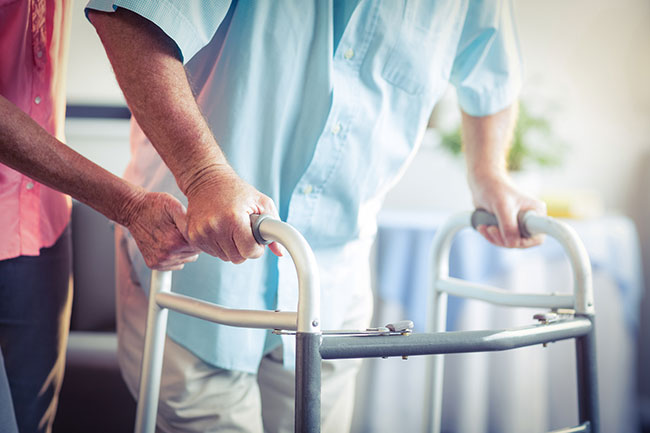Disability Friendly Flooring
June 20, 2017
 When it comes to remodeling a home for people with disabilities, an often overlooked feature during the process happens to be the flooring of the residence. For instance, a deep, cushy carpet floor isn’t the easiest surface for wheels to go over. On the other hand, a regular wooden floor can sometimes become too slippery for some. Regardless, the flooring of residence should still be a crucial part of a home remodeling when it comes to dealing with a disability.
When it comes to remodeling a home for people with disabilities, an often overlooked feature during the process happens to be the flooring of the residence. For instance, a deep, cushy carpet floor isn’t the easiest surface for wheels to go over. On the other hand, a regular wooden floor can sometimes become too slippery for some. Regardless, the flooring of residence should still be a crucial part of a home remodeling when it comes to dealing with a disability.
Those looking to remodel a residence want to make it compliant with the Americans with Disabilities Act (ADA). Depending on the disability, there are several considerations to take into account when adjusting for ADA compliant flooring. Going through the ADA standards can be quite complicated, but a necessary process.
Keys toward Compliant Flooring
In order for the flooring to be ADA compliant, the floor surface must be considered stable, firm, and slip-resistant. Those that are elderly or dealing with some sort of disability that impairs movement won’t have the balance or good reflexes compared to their younger years. If there is a stumble or a slip-up, then a fall is likely occurring. Given that bones are more brittle among older people, even a casual fall could result in broken bones somewhere.
So the flooring must be stable and firm in order to compensate for a relative lack of balance. Slip resistance is important in making the floor still rough enough to avoid situations where it may become slippery. Many with a movement disability use some sort of walking aids such as a cane. These disabled could be especially susceptible to a slippery floor. The ADA requires that a floor should have a coefficient slippage rate of 0.5, leaving little room for a potential slide.
Types of Flooring Available
There are many different flooring options that are can be adjusted to become ADA compliant as well as being environmentally friendly. There are harder surfaces such as hardwood, stone, concrete, and tile flooring. Slightly more forgivable flooring includes laminate floors, bamboo, and vinyl. The softer flooring option includes carpet and rubber flooring.
Harder better for Wheels, Softer better for Canes
Hardwood floors are a good fit for wheelchairs as they have a flat surface for devices to easily roll over. However, they can be easily scratched which is why concrete or tile flooring could be more ideal. Softer flooring would make it slightly tougher for wheelchairs to deal with, particularly carpeting. Laminate or bamboo flooring is also softer, but are hard enough for wheelchairs to easily travel through. They also are more durable as they don’t scratch as easily.
If a walker or cane is required by the person with the disability, then laminate floors would not be a good flooring option given that they can get somewhat slippery. Softer flooring is better for those with walkers since the cushion can help mitigate occasional falls from causing serious injury. The downside of carpeting is that debris can accumulate easier on carpeting. Other options could include textured tiles or rubber flooring in which the grouts can create better slip resistance and this type of flooring could also be considered softer than pure hardwood.
In conclusion, it is important to match the flooring with how the person gets around the house. The flooring can also be limited to certain rooms where the person with the disability frequents. However, factoring in how the person gets around should be the primary concern followed by how effectively the flooring can be maintained and regularly cleaned. Community Renovations specializes in renovating or building new structures that will meet the requirements of the SAH Benefits. Find us online or call directly at (734) 732-5904.